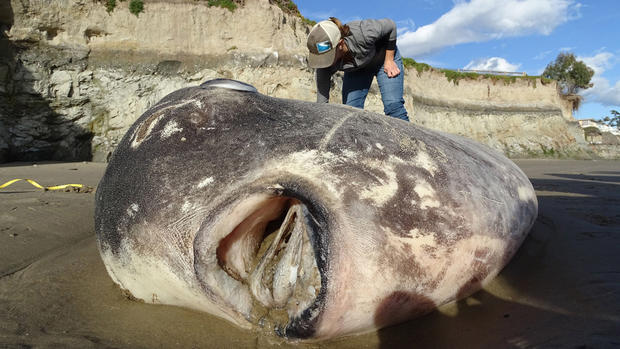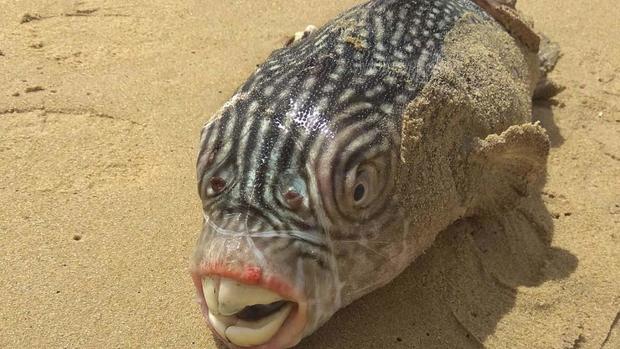A weird 7-foot fish with a face "only a mother could love" washed ashore in Oregon – and it's rarer than experts thought
An "unusual" and "strange looking fish" washed up onto an Oregon coast earlier this month, shocking people with its gargantuan size. At first, experts thought it was just a "run of the mill ocean sunfish," known by the scientific name Mola mola, but now, they've learned it's something else — and rare.
The Seaside Aquarium said in a Facebook post last week that the after photos of the massive 7.3-foot fish caused "quite a stir on social media," New Zealand researcher Mariann Nyegaard believed it was a species that isn't familiar to Oregon, but that she extensive experience with. The fish turned out to be a hoodwinker sunfish, which she "discovered and described" in research published in 2017.
Hoodwinkers were discovered "hiding in plain sight" in museum collections after 125 years of specimens being misidentified, according to the Australian Museum. Describing sunfish as "beautiful giants," the museum says that the world's largest bony fish can grow to be more than 4,400 pounds.
"Only a mother could love that face," one person commented on the aquarium's announcement, with another person describing the fish as "huge and sort of scary and interesting all at the same time."
Hoodwinker sunfish were originally believed to only live in temperate waters in the Southern Hemisphere, the aquarium said. But that has quickly changed.
"That theory would be challenged as a few have recently washed ashore in California and one as far north as Alaska," the Seaside Aquarium said. "This fish, hiding in plain sight, has most likely been seen/washed ashore in the Pacific Northwest before but was mistaken for the more common, Mola mola."
A hoodwinker sunfish was found at the University of California Santa Barbara's Coal Oil Point Reserve in 2019, with one specialist calling it "the most remarkable organism I have seen wash up on the beach."

The aquarium said that it would keep the fish on Gearhart beach and that at the time of the posting, its body would "probably remain for a few more days, maybe weeks as their tough skin makes it hard for scavengers to puncture."
"It is a remarkable fish and the aquarium encourages people to go see it for themselves," they added.

- In:
- Oregon
- California
- Science
Li Cohen is a senior social media producer at CBS News. She previously wrote for amNewYork and The Seminole Tribune. She mainly covers climate, environmental and weather news.
TwitterDisclaimer: The copyright of this article belongs to the original author. Reposting this article is solely for the purpose of information dissemination and does not constitute any investment advice. If there is any infringement, please contact us immediately. We will make corrections or deletions as necessary. Thank you.





